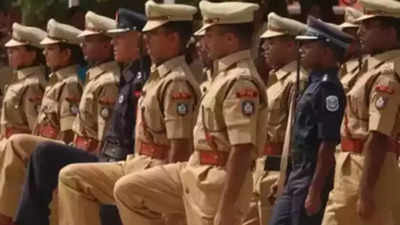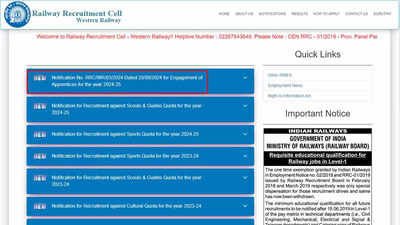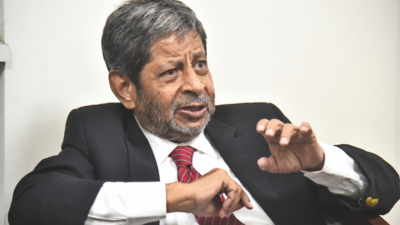Kanpur’s unique blend of tradition and modernity makes it an ideal destination for discussions on
Uttar Pradesh’s growth trajectory. In the fifth edition of TOI Dialogues in Kanpur, industry leaders, experts, and policymakers came together to decode how the city plays a pivotal role in the state’s progress and contributes to India’s growth story.
The panel featured prominent guests, including Sudeep Goenka, Director of Goldiee Masale; Manoj Gupta, Chairman of MKU Ltd.and Chairman of the CII Uttar Pradesh Infrastructure Committee; Maneesh Mansingka, Director of Singer India Limited and JK Urbanspaces; Dr Sanjay Kumar Singh, Professor of Business Environment at IIM Lucknow; and Mayur Maheshwari, CEO of Uttar Pradesh State Industrial Development Corporation (UPSIDC).
TOI Dialogues: Decoding Growth Story Of KANPUR
Kanpur: A city of economic potential
Sudeep Goenka, Director of Goldiee Masale, addressed the need for workforce retention in Kanpur. He began by reflecting on the city’s economic allure: “Kanpur is a city that people want to settle in. If you want to earn money and build a life, it’s an ideal place.” He then highlighted the issue of brain drain, stressing the need for skill development initiatives to reverse the trend.
“Today, India has the youngest population in the world, yet we are seeing a brain drain from Kanpur,” Goenka said. “If we can open training centres and promote skill development within the city, we can reverse this trend and retain talent.”
Goenka also noted the vast potential in the MSME sector, stating, “Currently, over 5,000 MSMEs are registered in Kanpur, and while 8% of startups in India are from Uttar Pradesh, only 1% come from Kanpur. If we develop incubation centres, we can foster new startups and retain local talent.” He further added, “Entrepreneurship runs in Kanpur’s blood. If we get the right ecosystem, we don’t need anything else.”
Connectivity and strategic location
Manoj Gupta, Chairman of MKU Ltd. and the CII Uttar Pradesh Infrastructure Committee, spoke about Kanpur’s strategic location and its connectivity advantages. “Kanpur is naturally well-placed, with the GT Road and expressways passing through the city,” Gupta stated. He emphasised the importance of waterways in bolstering the city’s trade and transport capabilities.
“Kanpur is situated along the banks of the Ganges, and we must utilise this natural asset. Waterways are critical, especially since Kanpur is a landlocked city,” Gupta said, urging policymakers to prioritise the development of waterways. “If we can expand waterways and integrate them with other infrastructure, connecting Kanpur with regions like Meerut, it will provide a significant boost to the city’s trade potential.”
Gupta also mentioned the advantages of Kanpur’s location in the broader context of Uttar Pradesh’s development, pointing out the potential of the city as a hub for rail and road connectivity across the region.
Building infrastructure and employment
Maneesh Mansingka, Director of Singer India Limited and JK Urbanspaces, spoke about the importance of infrastructure development to facilitate economic growth. Responding to a question about how Kanpur can utilise its workforce, he pointed to recent government initiatives. “Kanpur was among the top five cities in the 1960s in terms of tax revenue,” he said. “There’s a possibility to rejuvenate the city and bring back industries like engineering, IT, garment exports, and even new sectors with the upcoming defence corridor.”
Mansingka identified a critical challenge: “There’s a chicken-and-egg problem—industries will come if employment is available, and employment will rise if industries invest here. To attract industries, we need infrastructure—high-grade offices, residential developments, and hotels. Look at cities like Mumbai, Jaipur, or even international examples like London and Singapore.”
He suggested that poorly utilised land in and around Kanpur could be redeveloped for mixed-use projects, drawing inspiration from successful models in Maharashtra, Rajasthan, and West Bengal. “By focusing on these underutilised areas, we can stimulate growth and create employment opportunities,” Mansingka added.
Reviving Kanpur’s legacy industries
Dr Sanjay Kumar Singh, Professor of Business Environment at IIM Lucknow, offered insights into how Kanpur can maintain long-term, sustainable growth. “Kanpur’s history and legacy are its greatest assets, particularly in leather and textiles,” he said. “The city accounts for 20% of India’s leather production, and there’s huge potential to revive the textile industry, especially by focusing on designer products.”
Dr Singh pointed out that Kanpur’s neighbouring competitor, Bangladesh, has outpaced it in textile manufacturing despite current turmoil. “If we focus on innovation and incubation, especially leveraging IIT Kanpur’s expertise, we can regain that edge,” he said. He also stressed the importance of infrastructure, particularly the role of expressways and industrial corridors in reducing logistics costs. “Once these corridors are fully developed, the disadvantage of being a landlocked city will diminish, and Kanpur could become a major industrial hub.”
Singh suggested that if the government designates Kanpur as a Special Economic Zone (SEZ), it could provide a further boost to industries and attract investment from both domestic and international players.
Government support for Kanpur’s industrial growth
Mayur Maheshwari, CEO of UPSIDC, discussed the government’s role in supporting Kanpur’s industrial development. “The government is working in new ways, focusing on decentralisation and creating unified platforms where departments are interconnected,” he said. “For example, when the Dedicated Freight Corridor was being developed, we simultaneously planned a logistics park alongside it, which will facilitate the movement of goods.”
Maheshwari emphasised the importance of the Lucknow-Kanpur industrial corridor, calling it the largest such corridor in the region. “The upcoming Lucknow Expressway will further enhance connectivity and boost economic activity between the two cities,” he said.
In addition, Maheshwari revealed the government’s plans to develop an express rail line between Lucknow and Kanpur, designed to accelerate trade and economic growth. “We’re also exploring partnerships with IIT Kanpur to develop the city as a hub for electric vehicles (EVs),” he added, pointing to the potential for Kanpur to emerge as a leader in the EV industry.

















